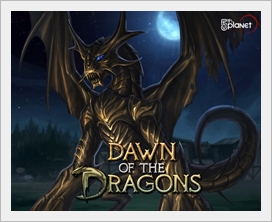As written for Technorati
Everyone wants a piece of the mobile pie, but display ads and banners aren’t working; e-mail contact with consumers is archaic and attention spans are short. One of the few industries getting it right in the mobile space is gaming: an industry often overlooked or marginalized by the business world.
According to a report compiled by investment bank Digi-Capital, Q1 2013 investment in games grew 35 percent by value to $191M and declined 4 percent in the number of transactions. I reached out to Tapjoy‘s Chris Akhavan to find out more about the changing mobile landscape and trends in the space. “After three years of continual growth, the hype around the mobile games industry has begun to level off,” Akhavan explains. “VCs have scaled back on investments, developers find it more difficult to break through, and a number of gaming studios are either going out of business or getting swallowed up by bigger players.”
Some critics have wondered it this is the early sign of an industry slowing down. According to Akhavan, however, the combined decrescendo of bottomless funding and new studios entering the market isn’t the sign of a mobile games bubble-burst—but rather, an indicator of market stabilization and maturation. “Now that the noise and frenzy of the initial mobile games boom has subsided and the first market peak is behind us, we’ll truly see the mobile games industry’s potential,” Akhavan expounds. In the world of social marketing and big data, where print publishers have lost consumer eyeballs to digital screens, content is king. Brands are eager to produce valuable graphics, articles, stories and experiences to retain the attention and loyalty of consumers.
According to Akhavan, the same is true in the mobile industry. “It’s in this period that great content wins, the strongest games and platforms survive, and the true players emerge.” All this points to a demarcation point in the mobile industry. Tapjoy expects increasing sophistication in every phase of the app economy. “Development, marketing, monetization, measurement and more, will result in a healthier, more stable market as well as a better consumer experience,” Akhavan continues.
 In migrating from browser-based games to mobile, game studio and Tapjoy client 5th Planet Games is one of many developers starting to realize that Free-to-Play is the new market opportunity. Free games require deeper levels of sophistication in how they’re developed. The $60-buy-it-once model that was very successful for studios in the past needs to deliver both value and revenue another way. “Today’s developers will need to invest more in understanding the performance of their user acquisition sources, in-game economies, user funnels, and the like to create better games and user experiences, and ultimately drive higher ROI,” Akhavan predicts.
In migrating from browser-based games to mobile, game studio and Tapjoy client 5th Planet Games is one of many developers starting to realize that Free-to-Play is the new market opportunity. Free games require deeper levels of sophistication in how they’re developed. The $60-buy-it-once model that was very successful for studios in the past needs to deliver both value and revenue another way. “Today’s developers will need to invest more in understanding the performance of their user acquisition sources, in-game economies, user funnels, and the like to create better games and user experiences, and ultimately drive higher ROI,” Akhavan predicts.
Done correctly, it can drive bigger profits. An engaging free game with the right monetization strategy at play can generate hundreds of dollars in virtual goods revenue. For monetization, developers and advertisers will join together through companies such as Tapjoy that offer an ecosystem for integrating ads that are personalized to consumer interests yet minimize disruption. And according to Akhavan and the folks at Tapjoy, the result will be a seamless, free-to-play experience that offers value and opportunity for all constituents. ‘”High-quality, free content for consumers, strong revenue streams for developers and a direct and engaging method for brands to target customers,” Akhavan itemizes.
Developers who are unable to compete at this new level of sophistication will fall behind and risk becoming industry causalities, but overall the mobile games industry won’t suffer major hardships. “The winners will continue to reap massive rewards,” Akhavan asserts, citing recent successes by companies like SuperCell and GungHo. “Despite the small pop to the ‘mobile games hype bubble,’ this dip in sentiment is a necessary step toward long-term, sustainable growth,.” he concludes.


